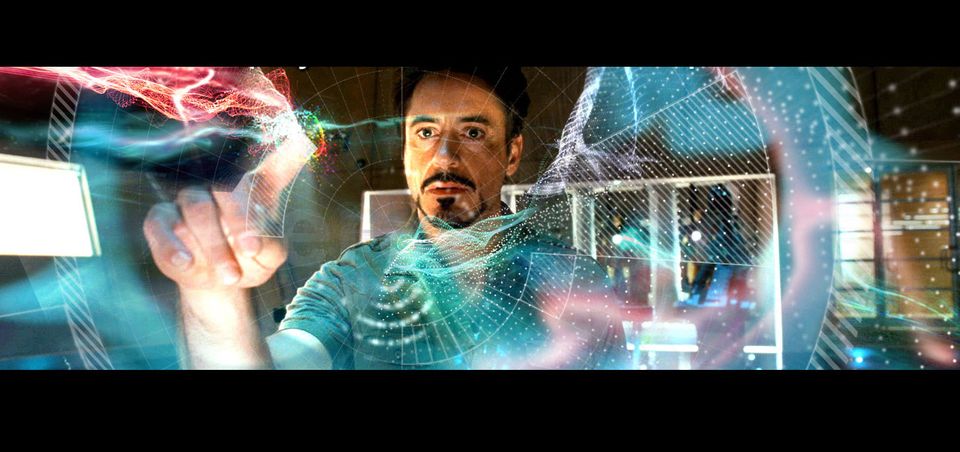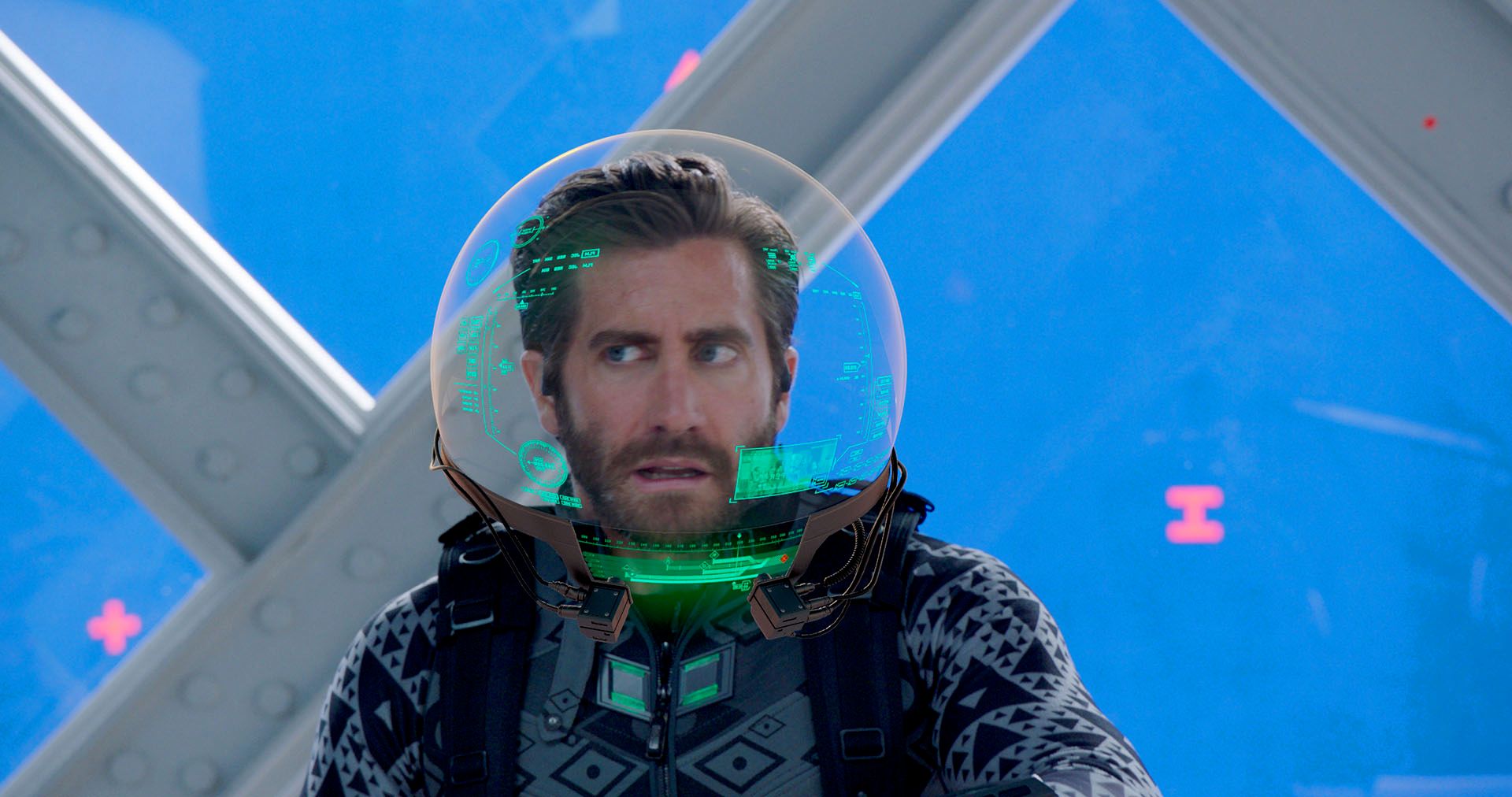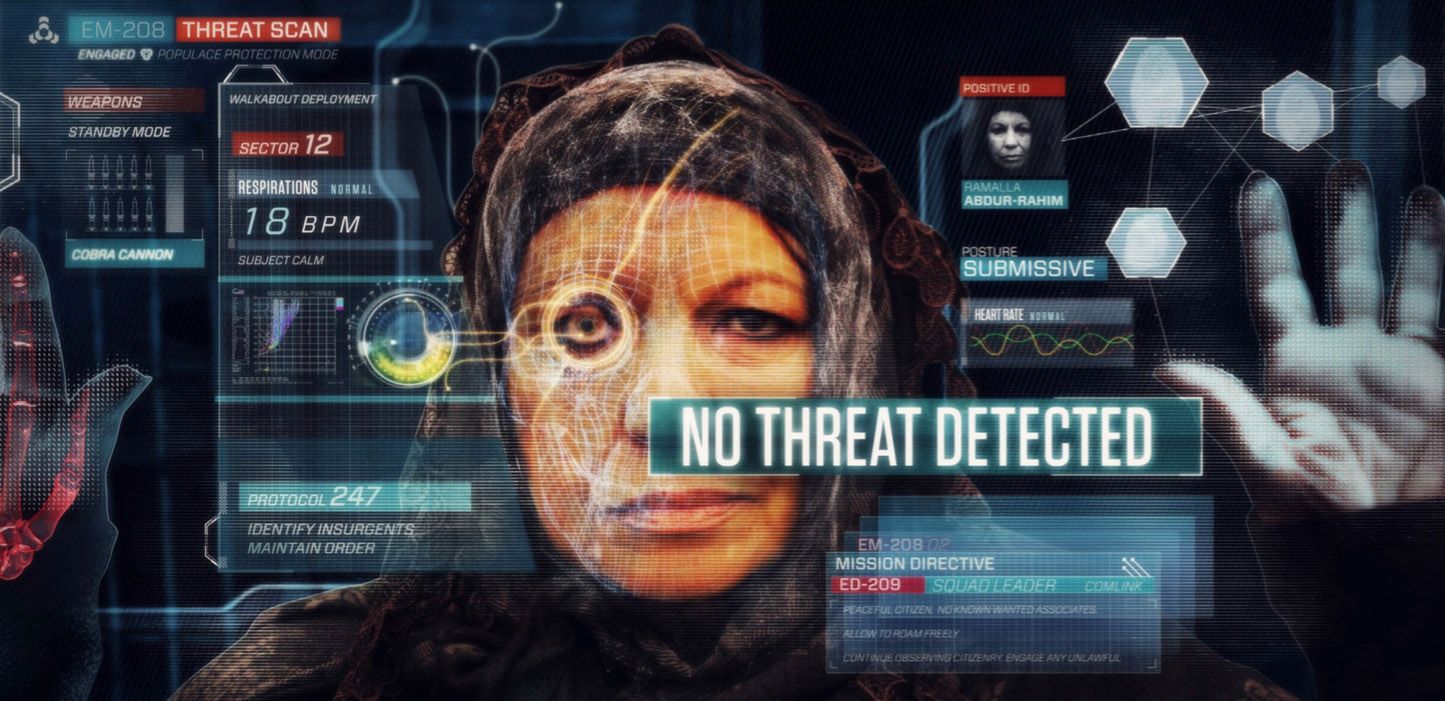Meet the company designing tech for superheroes and spacecraft

It was shortly after Iron Man 2 was released in May 2010 that design lab Perception started to get some unexpected calls. After nearly a decade creating motion graphics for broadcast networks, the Perception team had spent the last several months conceptualizing, designing, and animating Tony Stark’s futuristic technology, from his signature glass phone to the 3D- holographic workstation where Stark brings his mad science machinations to life.
For Perception co-founder Jeremy Lasky, a lifelong fan of the Marvel comics, the job was a dream come true. But he never could have anticipated what came next.
“We started getting calls from technology companies very, very quickly after the movie,” Lasky told The Science of Fiction. “We got a call from Microsoft who flew out a team to meet us to talk to us about a host of projects. We got involved with something with Samsung at the time. And all of a sudden this was like this whole new world of opportunity that we didn't see coming.”

Since then, Perception has carved out a unique niche for itself in the visual effects space: Designing futuristic technologies for superheroes, and doing the same for real world tech companies.
Perception has become one of Marvel’s go-to studios for visual effects, developing not just the holographic displays and interfaces used by Stark and his cabal of Avengers, but the Vibranium-based nanotechnology that pervades the futuristic African civilization of Wakanda, and the title sequences for countless Marvel films and TV shows, from Thor:Ragnarok to WandaVision. At the same time, the company has worked with some of the world’s largest consumer tech firms, automakers, and aerospace companies to bring a science fictional feel to real world displays and user interfaces. Perception worked with IBM to develop the avatar for an artificially-intelligent debate program, and it partnered with Intel to visualize the firm's work using drones and AI to survey the Great Wall of China.
Perception’s designs for Stark Industries and its work for actual tech companies are deeply intertwined, with science fiction inspiring the team to develop new user experiences and data visualizations in the real world and advancements in actual science and technology driving innovation within the Marvel cinematic universe. The Science of Fiction spoke with Lasky to learn more about the company’s work, its unique approach to design, and the feedback loop between superhero technology and the devices that permeate our lives.
This conversation has been condensed and lightly edited for clarity.
***
Maddie Stone: As you described it, prior to Iron Man 2, Perception was mostly doing visual effects for broadcast networks and advertising agencies. How did the company’s focus change after that film came out?
Jeremy Lasky: That changed everything for us because we then became this company that was designing for films and technology. The Marvel collaborations have just gotten better and stronger and richer. Pretty much every movie since Iron Man 2, we've gotten to touch in some form or another. We’ve done a ton of title sequences, which was one of my earliest goals and dreams. But just as exciting has been the work that we've gotten to contribute to the technology of these films and these characters. The most notable one is Black Panther, because there's so much about the technology that drives that story, drives that civilization, drives those characters. They are a technologically driven world. They are light years ahead of Tony Stark. Wakanda puts Tony Stark to shame.
Vibranium sand is a form of nanotechnology fueled by Vibranium, the fictional material that powers the mythical world of Wakanda. Perception was closely involved in developing this technology and conceptualizing its many uses in Black Panther.
So there's all this technology work that we've gotten to contribute to Marvel. And the other side of the equation is collaborating with tech innovators around the world, which has just been an amazing, expansive list of some of the most innovative companies on the planet. We've worked with Apple; we've worked with the commercial space industry. We've been working with Ford for many years; we've worked with Mercedes, BMW, Maserati. We've gotten to work in a lot of different industries. And it's taking the inspiration from the science fiction of the films and asking ‘how can we use that to inspire real world technology companies’? And the real world technology companies love the fact that they're getting the same team that's working on Iron Man's heads-up display and Wakanda's Vibranium Kimoyo beads and Mysterio’s helmet. There's something really exciting about that.

Maddie Stone: When you first started getting calls from tech companies, did they bring up a specific film or a specific piece of tech and say, ‘we want you to do something like this for us?’
Jeremy Lasky: Yeah. It's always 'we want our stuff to look like Iron Man'. And actually, in the early years of us doing this, we also heard Minority Report. Everybody wanted everything to look like Minority Report. That was a big milestone in science fiction films that inspired a lot of tech. But, yeah, it's always very similar to this request: ‘We want our stuff to look like it does in the movies,’ whether it’s Iron Man or Black Panther or Robocop or whatever the popular movie is at the time. There's always some touchstone that a tech company will use that's inspired them to want to reach out and work with us.

Maddie Stone: Superhero movies often feature advanced technology, but then there's also stuff like Thor’s magical hammer. There are these mystical elements blended in with the high tech world. I guess what I'm wondering is, does working on films allow you more creative freedom than working with a tech company, where you have to operate within the constraints of actual science and the tech we have today?
Jeremy Lasky: A thing that we're always considering [in our film work] is this idea of a 'technological climate'—what is the technological climate of our society now. What is feasible with technology? And knowing that, how do we go just a little bit beyond? If we go too far beyond it, you'll lose everybody, people won't buy it. So it's knowing how far it's okay to push before you start losing people. And that's something that we're very aware of. We're constantly trying to search out innovations and bleeding edge technologies that we can kind of build off of and maybe just nudge a couple of degrees to the right.
When we first started [working on] Black Panther, even before they started shooting the film, they wanted to consult with us on technologies. And they basically gave us a laundry list of challenges that they're trying to solve. How does Black Panther’s costume come on, how do these Kimoyo beads behave? And how can we create something that's holographic that doesn't feel like [Tony Stark’s] Jarvis holograms, but that feels special to Wakanda?
There's this notion that Vibranium is sound-driven and there's a lot of acoustical qualities to it. So, how could we define a list of laws and rules of Vibranium? That's something that we were able to consult with them on. We had done some work with [audio technology giant] Harman on haptic technology — sound waves that you can actually feel in the air. We had done some research on a university in Japan that was using ultrasonic waves to levitate Styrofoam particles. So, could we use that idea to create holograms using this smart matter of Vibranium? And all that stuff started to inform the telling of the story.
Vibranium sand took inspiration from acoustical levitation work being done by researchers at the University of Tokyo.
There was an executive producer on the film that would be the one to say after everything we proposed, could this be accomplished by science and technology? Or could this only be accomplished by magic? And if the answer was it could only be accomplished by magic he would eliminate it. They didn’t want anything in the film that felt like it's magic or Dr. Strange. That doesn't have some sort of, even if it's far fetched, scientific principle grounding it.
Maddie Stone: Is there a lot of consulting with scientists and engineers throughout your process?
Jeremy Lasky: We love to consult with scientists and engineers. We're always looking for any expert in a particular field that we're going into so we can bounce ideas. If it's not grounded in reality, then it's just a bunch of glowing blue stuff on a screen. And that's just not what audiences are going to buy these days. Audiences have gotten much more sophisticated, much more savvy. You watch these YouTube videos now where people just break down scenes and put everything under the microscope. You really got to do your homework, you really got to make sure that what you're trying to do is plausible because you'll be exposed pretty quick.
Maddie Stone: Can you give me an example of something you designed for a film that's had a tangible influence on something we see in the real world today?
Jeremy Lasky: There's something that we did for Captain America: Winter Soldier, where Nick Fury is being chased in his SUV. It's the first time he confronts the Winter Soldier and his SUV goes on autopilot. And there's a predictive analysis autopilot that's showing the car HUD [heads-up display] how to navigate the traffic and what’s the best way to get out of there. And we actually did a very, very similar almost one-to-one visualization for Jeep right around that time.
Montage showing the graphics Perception worked on for Captain America: Winter Soldier, including the interface design and heads-up display for Nick Fury's truck.
Another thing we worked on in a movie that has kinda come to life is Tony Stark’s smart mirror. In Iron Man 2, at one point Stark goes up to his mirror in his bedroom and it's analyzing his palladium levels and basically telling him how long he's got to live. And all this data appears on a mirror. And now, of course, you have all these workout mirrors. So smart mirrors have come to life, and that was something we did in 2010.
One of the things that's interesting is that what works in movies doesn't always work in real life. It looks awesome when Robert Downey Jr. is holding a clear phone, but how practical is that in reality? How practical is it to have to use your whole body, all day, to do gestures and get through a Minority Report interface? It’s gonna be pretty exhausting.
A prototype of Tony Stark's glass phone Perception presented to Marvel.
Maddie Stone: What are some of the biggest challenges when it comes to designing tech and interfaces for science fiction?
Jeremy Lasky: I think it all comes down to making sure that what we're doing is enhancing the story, and that it really becomes part of the character and who they are and what they're doing. There's the famous Star Trek communicator device which inspired the Motorola [Star Tac] flip phone. And the lesson there is Star Trek demonstrated the utility that such a device could have in the real world. And that's something that we want to make sure our tech in the movies is actually doing. That it is actually enhancing these characters’ lives or helping them in a certain situation. Whatever the motivation of the scene is, our tech work is really just a part of that. It should just become a seamless extension of the characters and the scene, and it should really feel like it belongs there. That was one of our goals with the Black Panther, that the tech should feel native to these characters and to the country, to the society. It should feel cohesive and blended in with everything else in that film. And hopefully we succeeded in that.
Maddie Stone: Do you have a favorite piece of tech you worked on for Black Panther?
Jeremy Lasky: I think the Kimoyo Beads are really cool. [Editor's note: Kimoyo Beads are a wearable Vibranium-based technology that can project holographic images, scan a subject, and more.] There's also the healing lab — Shuri’s lab. That was pretty amazing. I mean, if I were to get one piece of tech, I would love to have his suit. The Black Panther suit’s pretty awesome.
Perception developed the visual effects showing how Black Panther’s suit builds onto his body from Vibranium nanoparticles that follow the contours of light-emitting tattoos.
Maddie Stone: Is there a real world piece of tech you’ve worked on recently that's been particularly exciting?
Jeremy Lasky: I would definitely say the EV Hummer, because that's one I could talk about. There's a lot of stuff that I can't because of the top secret, NDA nature of a lot of our work. But the Hummer work has been incredibly rewarding and awesome to be a part of that team and that collaboration.
Perception designed the instrument display inside the Hummer EV, among other UI elements.
Maddie Stone: What are the biggest tropes in sci-fi technology that you're hoping to see retired at some point?
Jeremy Lasky: You know, one person asked me about a year ago why do they always use hexagons [in sci-fi graphics]? Like, transitions with hexagons, hexagons in the sky with teleportation. The ‘hex’ in WandaVision. Even in Justice League, which I watched a couple of weeks ago, there were some hexagonal graphics. I wasn’t too aware of it until that person actually asked me about it and now I’m like, oh my God, every movie has a hexagonal fade-on, fade-out. So I guess you could say that one is played out a little bit.
Top image: Tony Stark inventing new elements in his hologram-filled workshop. Credit: Marvel Studios
Editor's note: This article has been updated to remove the name of a firm that Perception has worked with under a non-disclosure agreement.